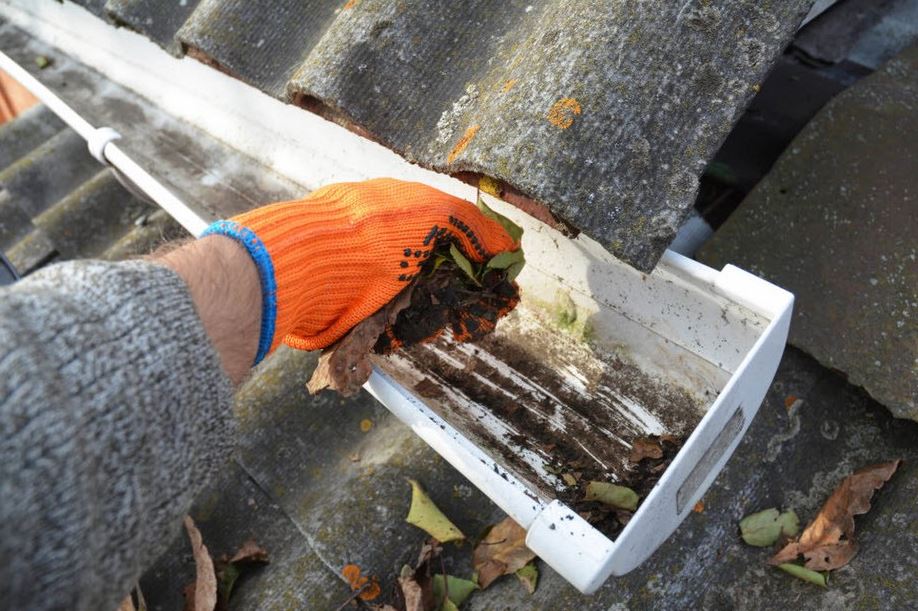If you have a home improvement project like a roof repair or kitchen remodel, you might need a home improvement loan to pay for it. However, this may be difficult for someone with a bad credit score. Not all lenders will offer loans to people in lower credit brackets.
By exploring the best home improvement loans with bad credit, you can find the financing you need to cover a home improvement project and repair or improve your home.
Best home improvement loans with bad credit
Not all home improvement loans for bad credit are created equal. That’s why it’s important to shop around and look at the various options at your disposal. When you do so, be sure to compare factors like interest rates, terms, and fees so you can make the right choice for your situation.
OneMain Financial
OneMain Financial caters to borrowers with bad and fair credit. The lender offers fairly small unsecured loans with an involved application process. Secured loans are also an option if you’re willing to provide collateral. If you’re having trouble finding home improvement loans with bad credit, OneMain Financial might be the right fit.
Perks: You can take advantage of joint applications to add another person to your application. This can be helpful if you don’t think you’ll qualify on your own or want to better your chances of getting approved.
What to watch out for: Loans are capped at $20,000, which might not be enough, depending on the home repair project you’re funding. APRs start at 18 percent, which is high for the best offer and above the average credit card APR of 15.99 percent, but it might be reasonable if you’re applying for home repair loans for bad credit.
Read Bankrate’s expert OneMain Financial Review.
NetCredit
While NetCredit caters to those with bad credit, you might be stuck with a higher APR compared to other lenders. In New Jersey, for example, APRs start at 34.99 percent. The good news is the lender doesn’t charge fees and reports to the major credit bureaus so you can build your credit.
Perks: Loans start as low as $1,000, which is good if your home improvement project doesn’t cost that much or you’re faced with an emergency fix in that ballpark price range.
What to watch out for: Limited options — NetCredit is only available in 36 states. If you don’t live in a state where it’s offered, you may want to look into alternatives. Beware that APRs go as high as 155 percent, which is more than four times the highest APR for competing lenders. For example, OneMain Financial caps its APR at 35.99 percent.
Read Bankrate’s expert NetCredit Review.
Avant
If you have bad credit, you may qualify for a loan through Avant, a lender that caters to those with less-than-stellar credit. It offers a mobile app that can allow you to see your payment history and keep track of upcoming payments.
Perks: Generous loan amounts ranging from $2,000 to $35,000. Fast funding means you can expect your loan payment as soon as the next business day.
What to watch out for: The origination fee is up to 4.75 percent. Late fees and insufficient funds fees can also be charged. The APR starts at 9.95 percent, which is high compared to lenders who work with borrowers with better credit.
Read Bankrate’s expert Avant Review.
How to build up your credit to get a home improvement loan
Having bad credit could be a huge hurdle when it comes to qualifying for a home improvement loan. While you may have some lenders that are available to you, you’ll want to make sure you’re prepared before applying.
Before applying, check your credit report and credit score to know what lenders will be reviewing. If there are any errors, dispute them and have them removed. This might increase your credit score and your chances of qualifying for home improvement loans with bad credit.
Start making at least the minimum payments on all your outstanding loans and credit cards on time every month. Creating and maintaining a positive payment history is one of the most important factors in building up your credit score.
Try to lower your credit use. That means pay as much as you can on your credit cards every month and avoid maxing out your limits. If possible, try to use them less. You might want to use cash more often if you tend to overspend.
Keep in mind that there’s no “quick way” to build your credit. It will take some time so you can’t expect better rates right away. If your home improvement project can’t wait, you may have to settle for higher rates or more favorable terms.
Other options for getting a home improvement loan with bad credit
While getting a personal loan to cover home improvement costs might be a good idea for some, it’s not the only option. You can look into alternative ways of funding your home improvement project.
Home equity loan: A home equity loan is a type of second mortgage you can take out on your home to cover home-related expenses, like home improvement projects. Rates are fairly low and can range anywhere from 3 percent and 12 percent The amount you can borrow depends on how much home equity you have built. Your home is used as collateral, which means your credit score doesn’t matter as much compared to a personal loan. This makes it a great option for home repair loans for bad credit. The downside is that you could lose your home to the bank if you default on the home-backed loan.
Home equity line of credit: A HELOC is like a home equity loan in that you can borrow money to finance home improvements using your home as collateral. But instead of giving you a lump sum, a HELOC acts as a revolving credit line similar to how a credit card works. Since HELOCs come with variable rates, they can’t exceed the maximum legal limit for federal credit unions, which is currently 18 percent. A HELOC is good if you have ongoing improvements and aren’t sure when you’ll need the money (or how much).
Bad credit loans: Beware of no-credit-check home improvement loans, as companies that offer them often charge exorbitant interest rates sometimes more than 400 percent. The extremely high-interest rates could put you in more debt.
The bottom line
While bad credit can make or break your chances of getting a home improvement loan, you still have some options to borrow cash. Review each option you have, including online lenders, banks or credit unions near you.
Use a loan calculator to determine if you can afford the monthly payments before taking out the loan. After you’ve gotten your loan, it’s important to make on-time payments every month to make sure your credit score doesn’t tank. Budget for your new loan and do your best to pay off any other outstanding debt to give your credit score a boost. Even with a new loan, you should work on getting your credit score in the best shape possible.



More Stories
Timber Dining Tables | Why They Should Be Your Number 1 Choice
How to Use Microwave with Oven Functions for Quick and Easy Cooking
Jersey Shore condo to Beach Townhouse Update